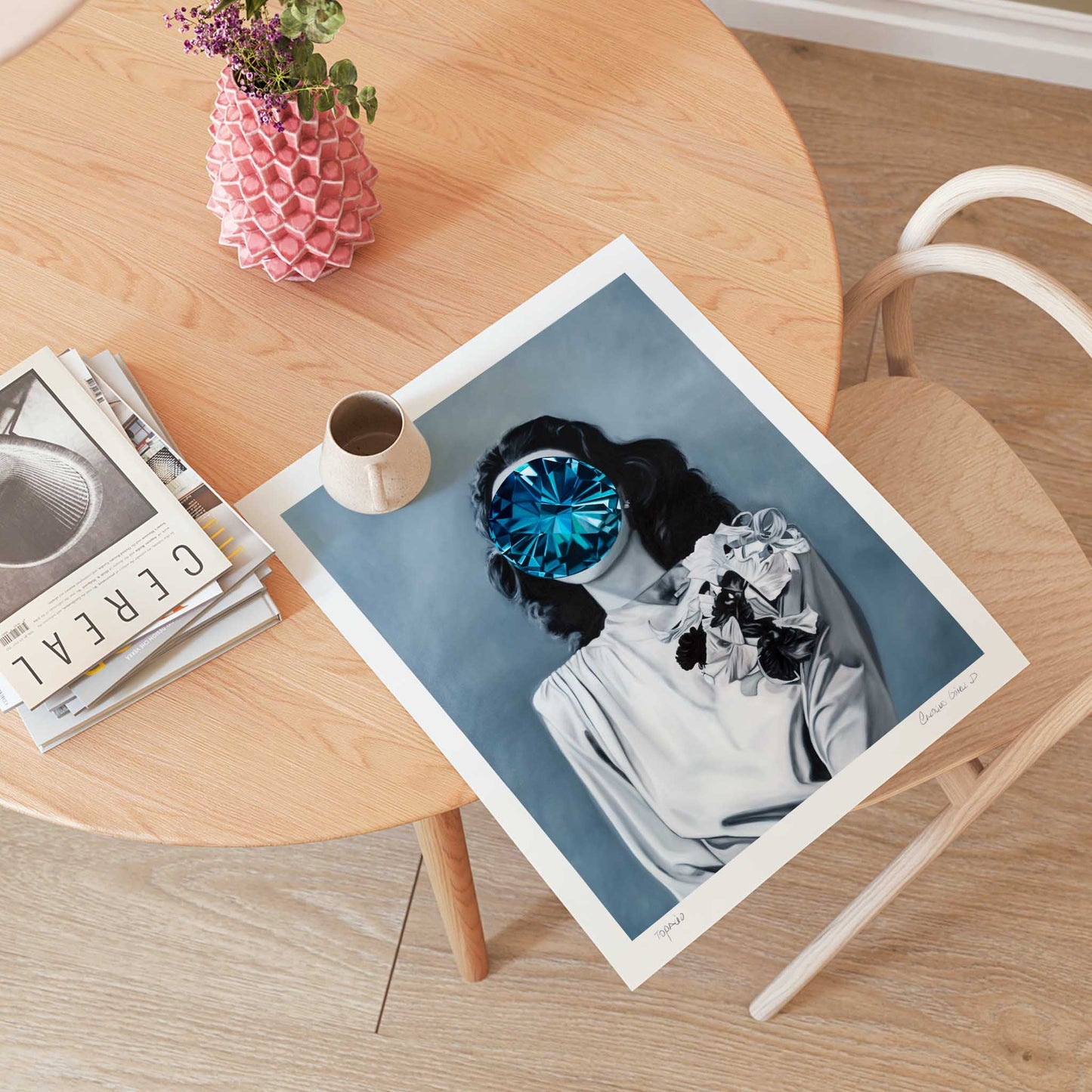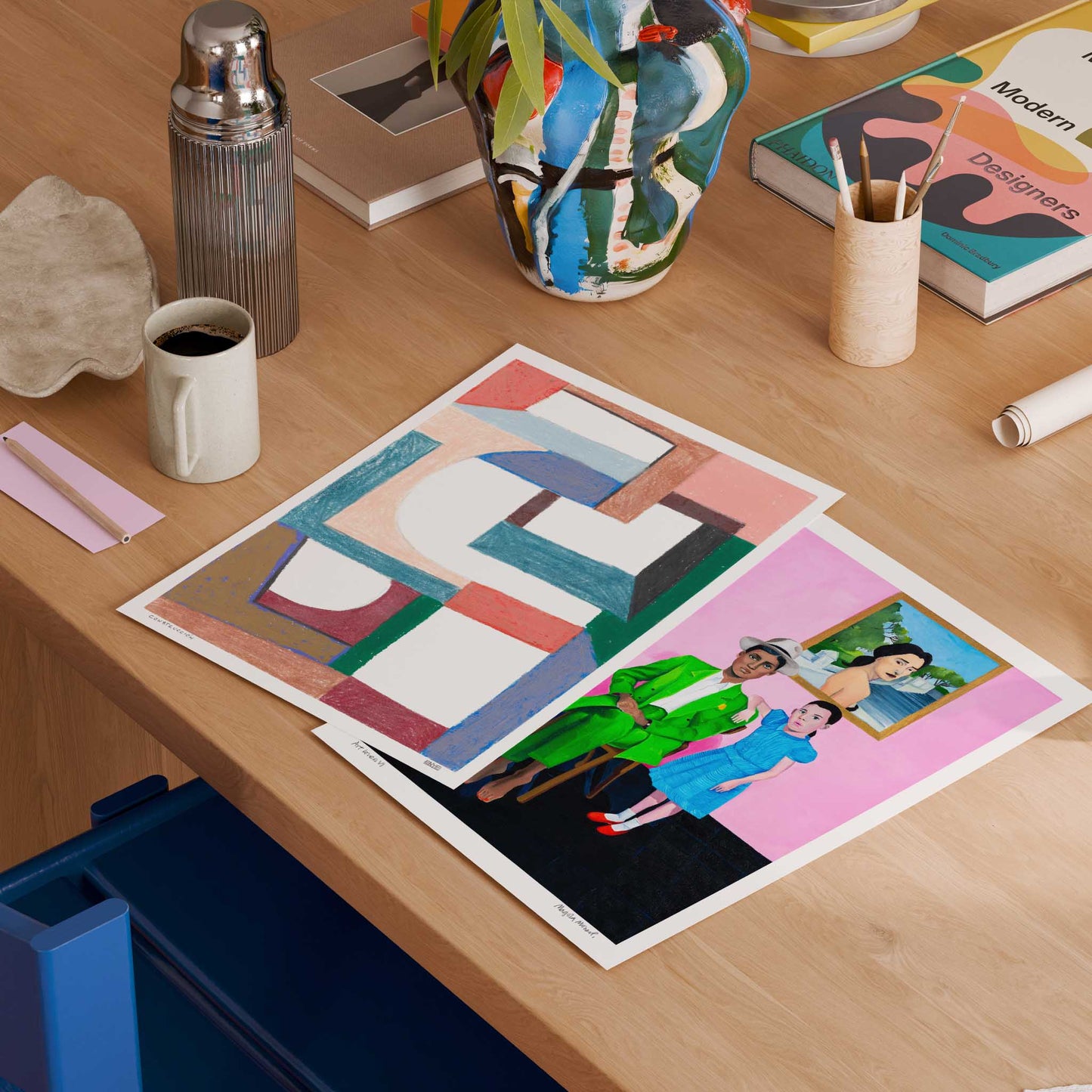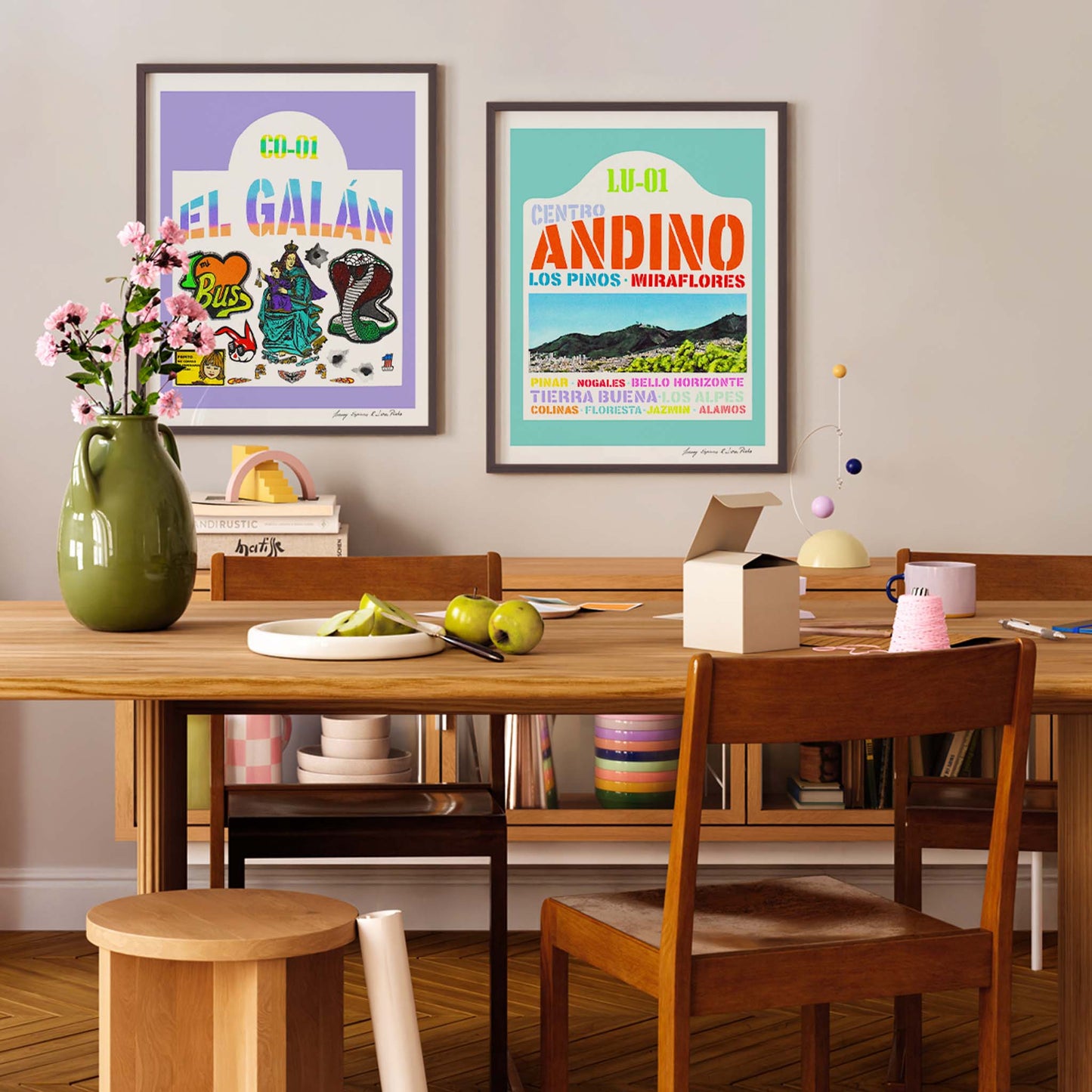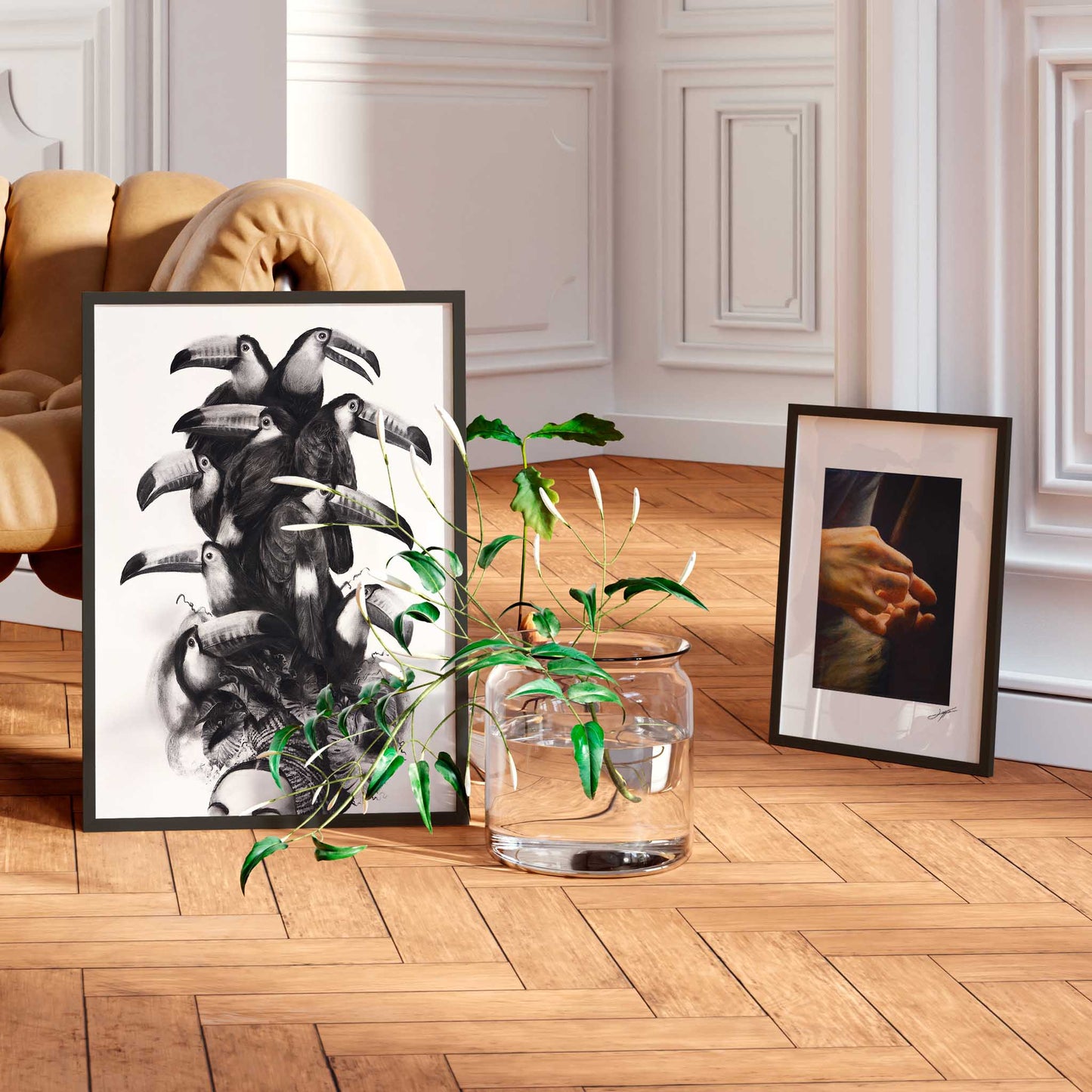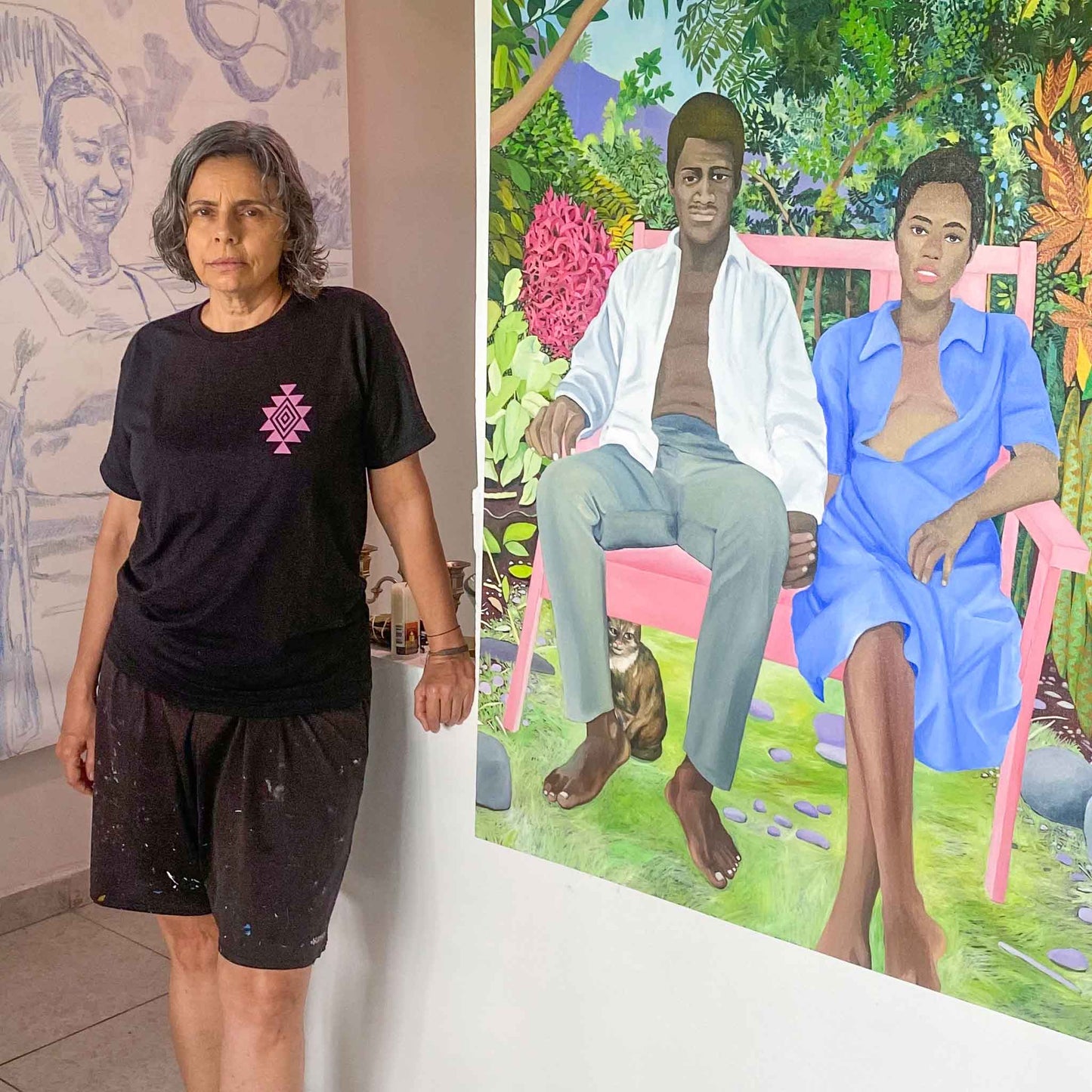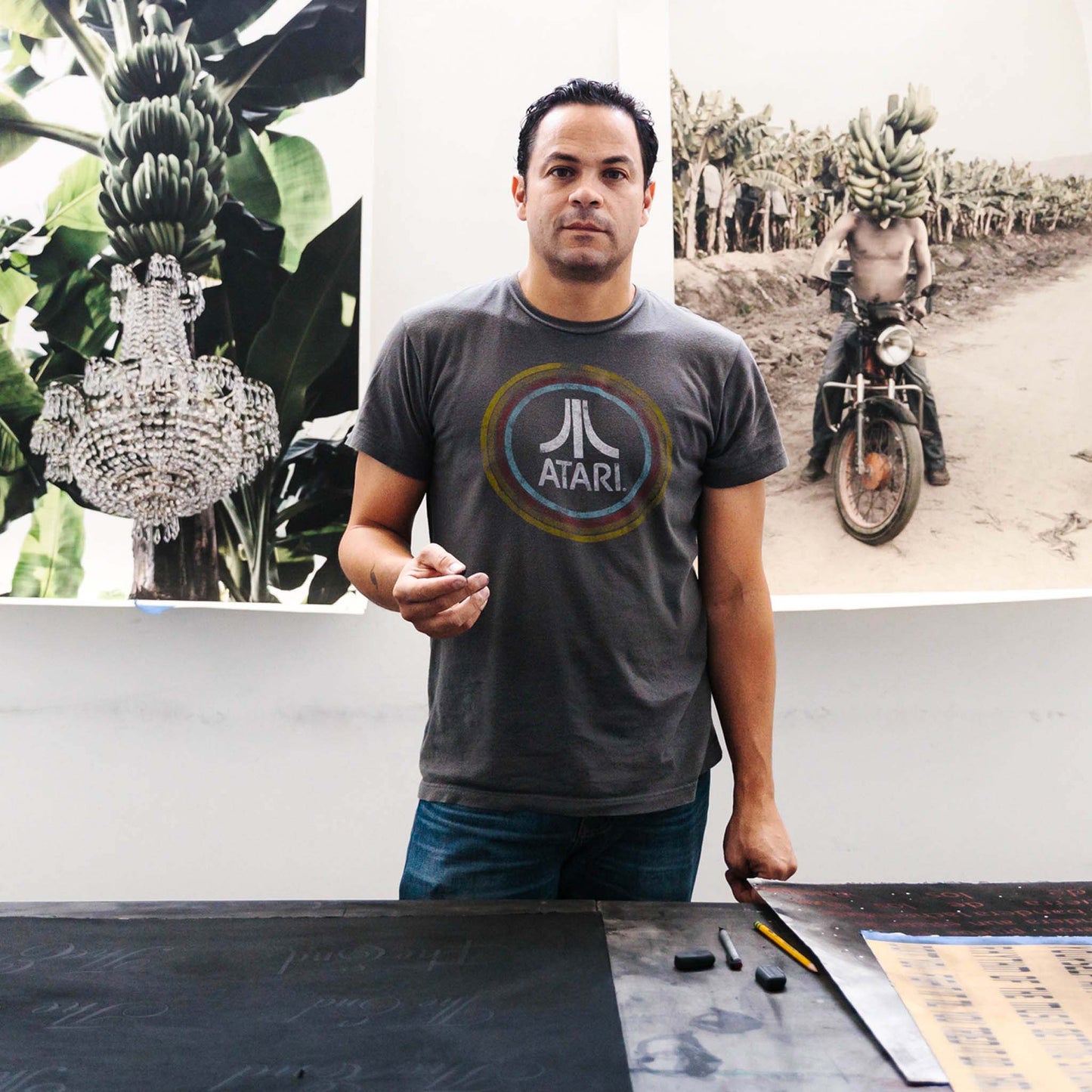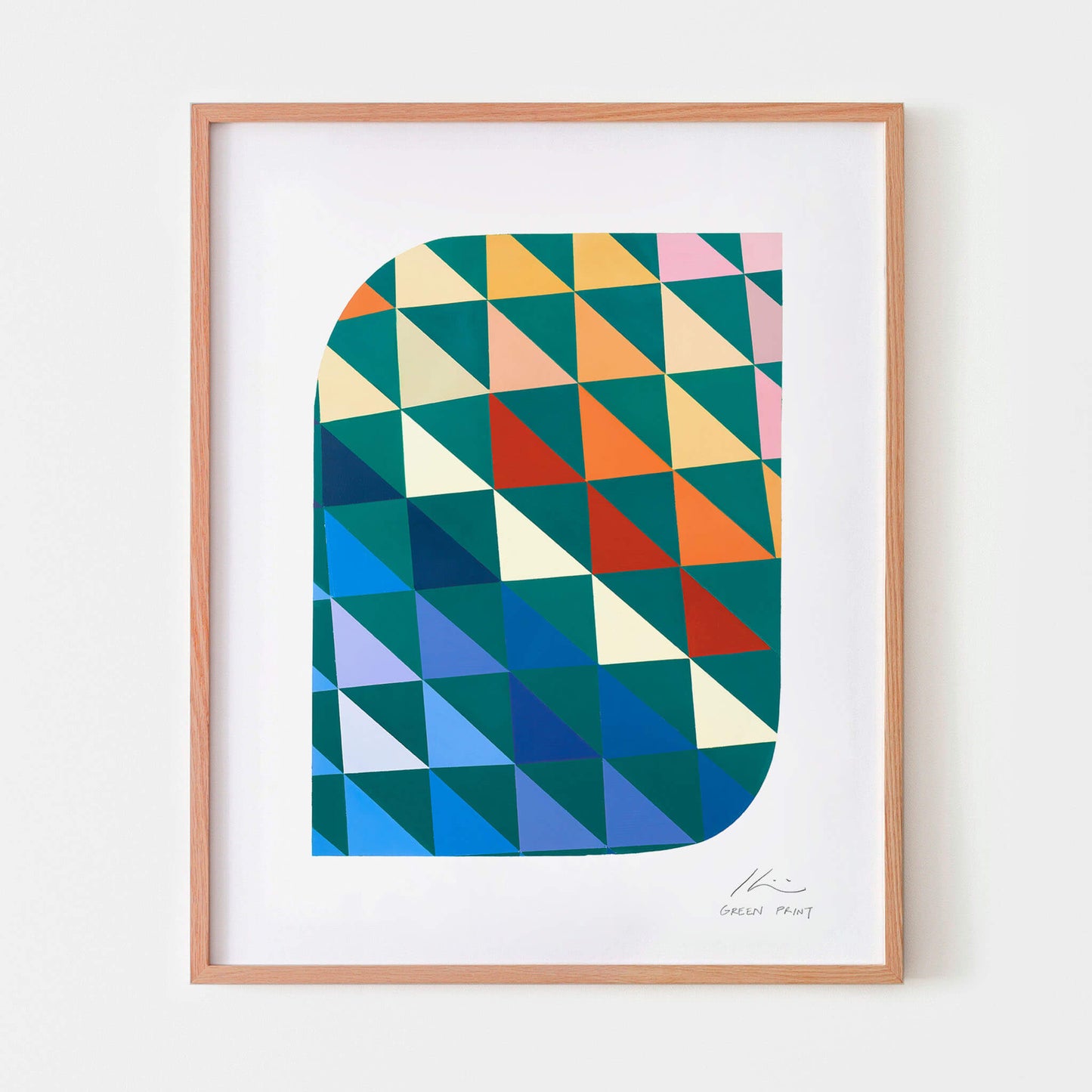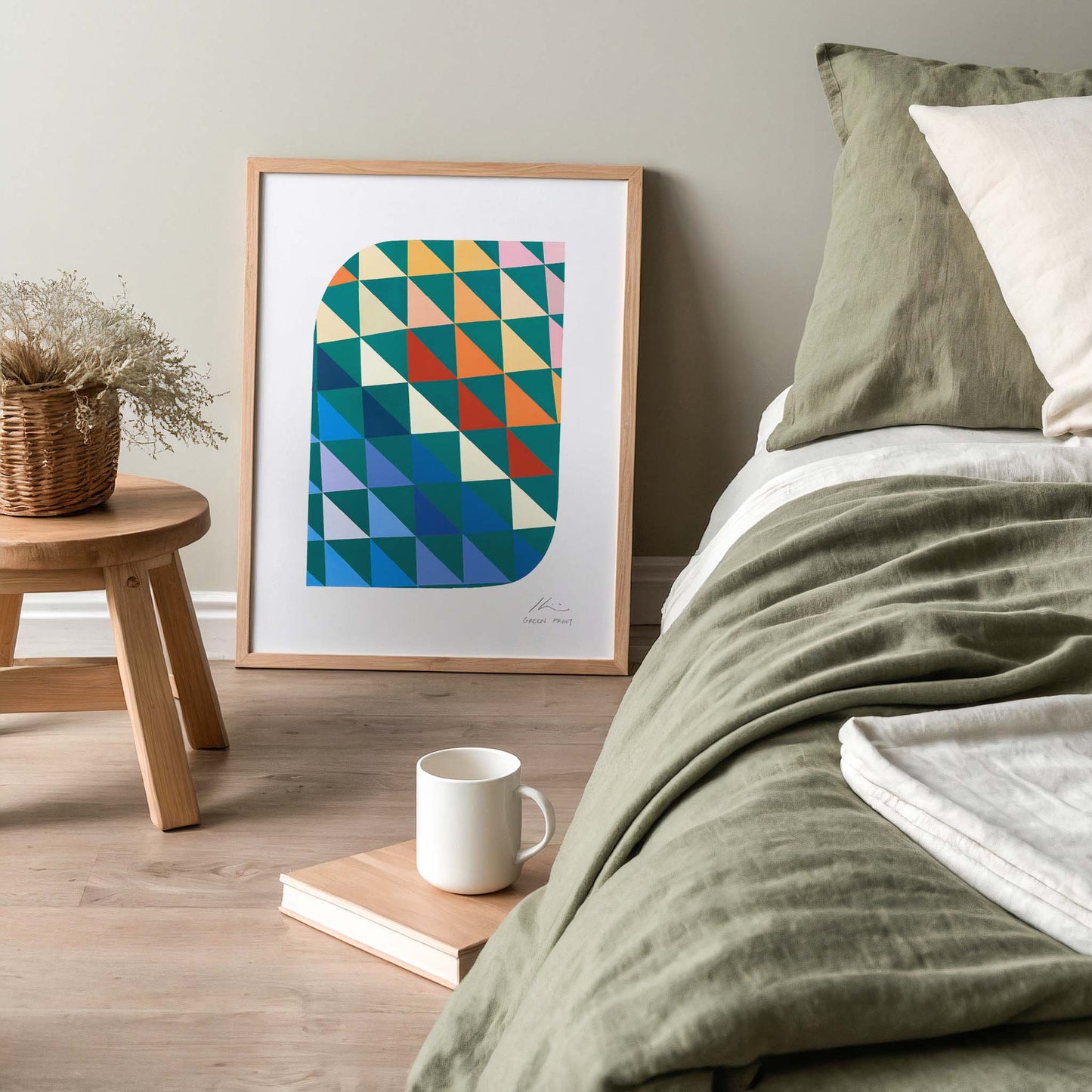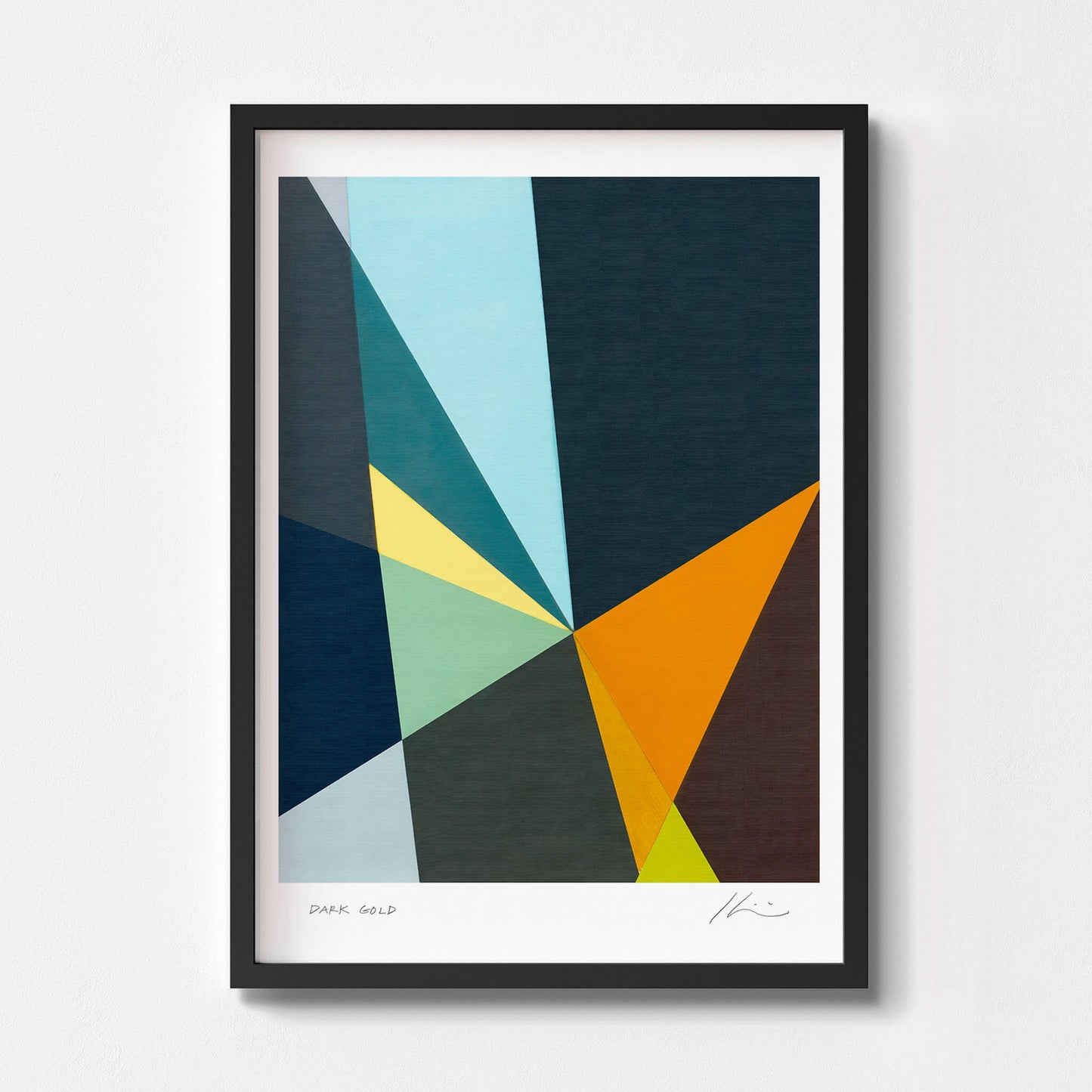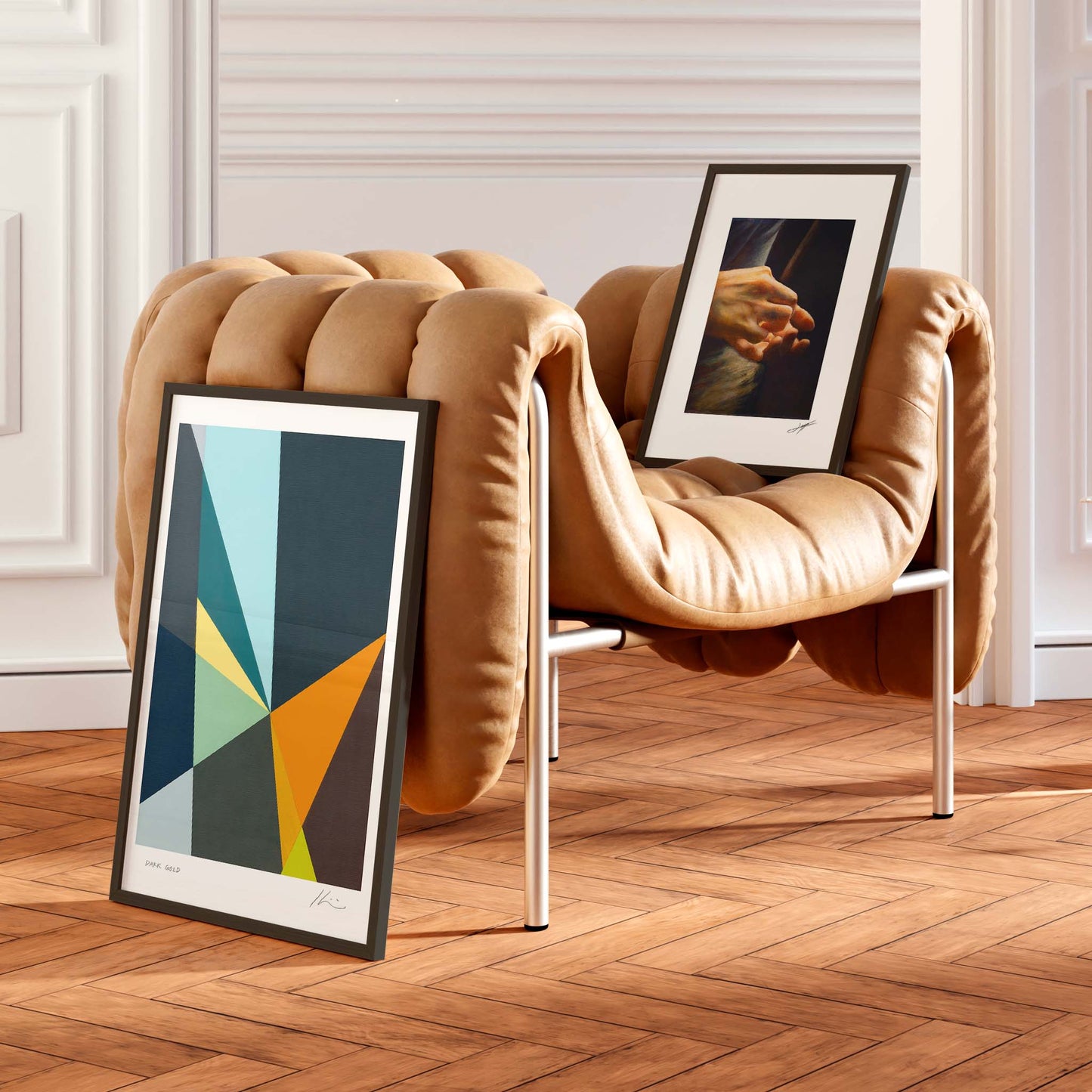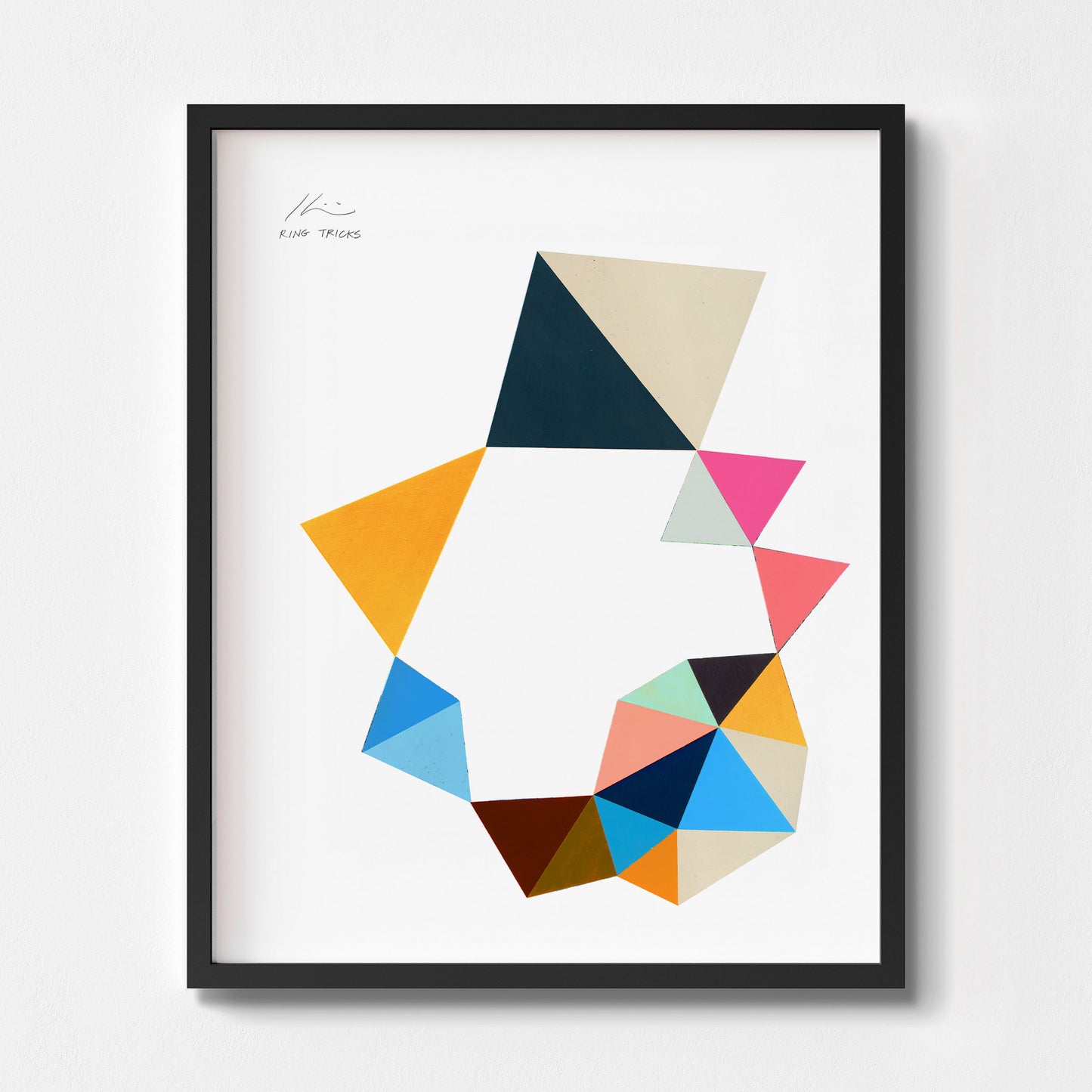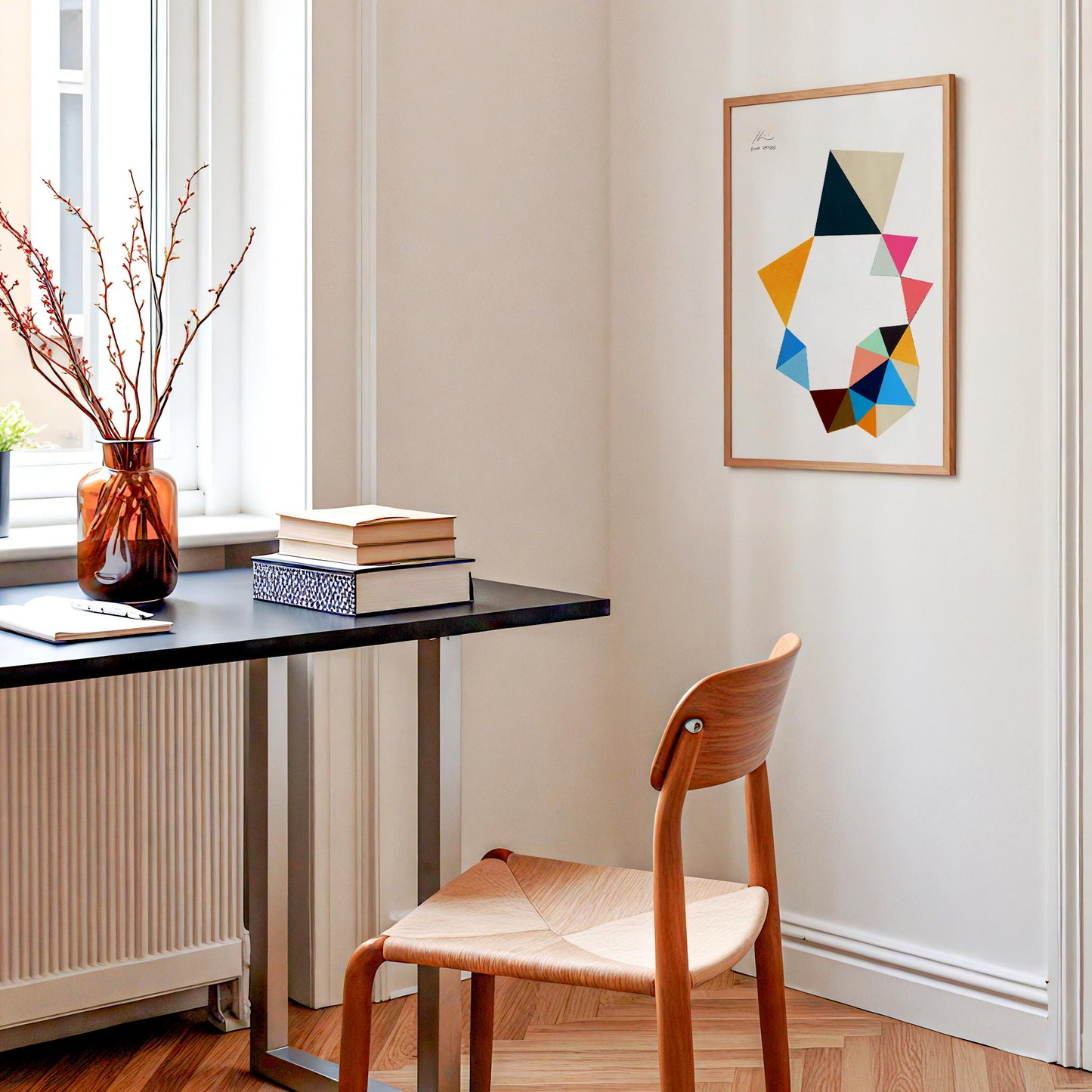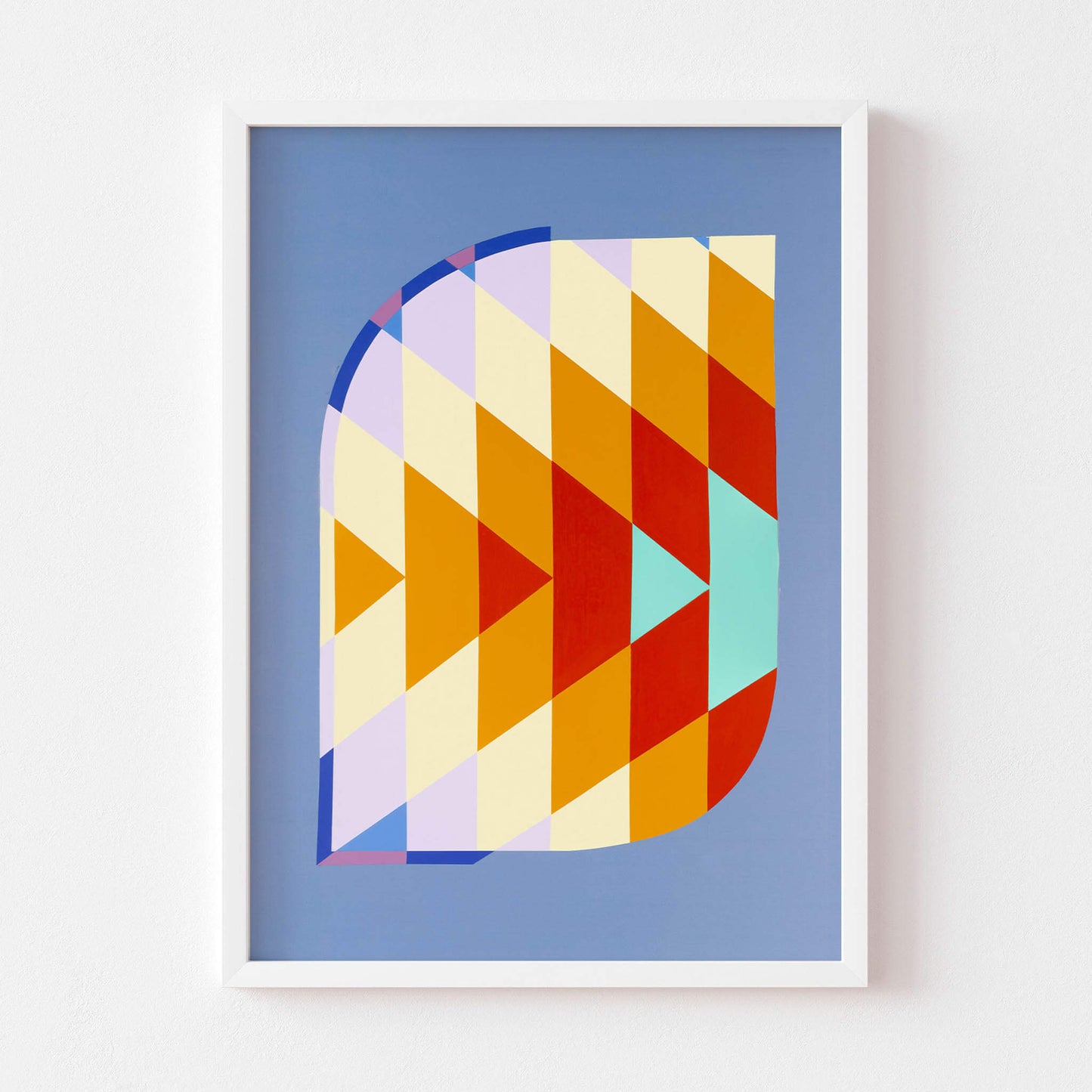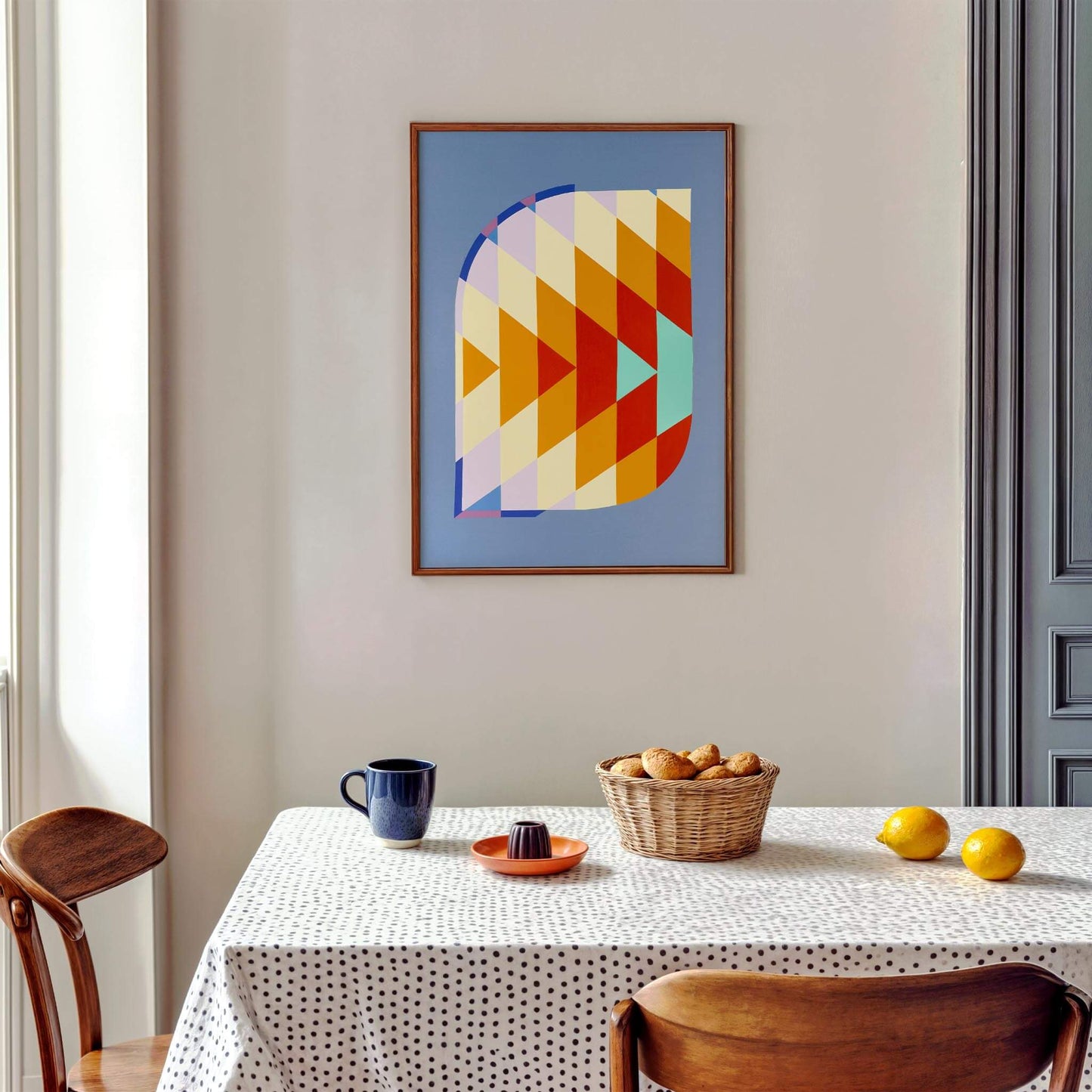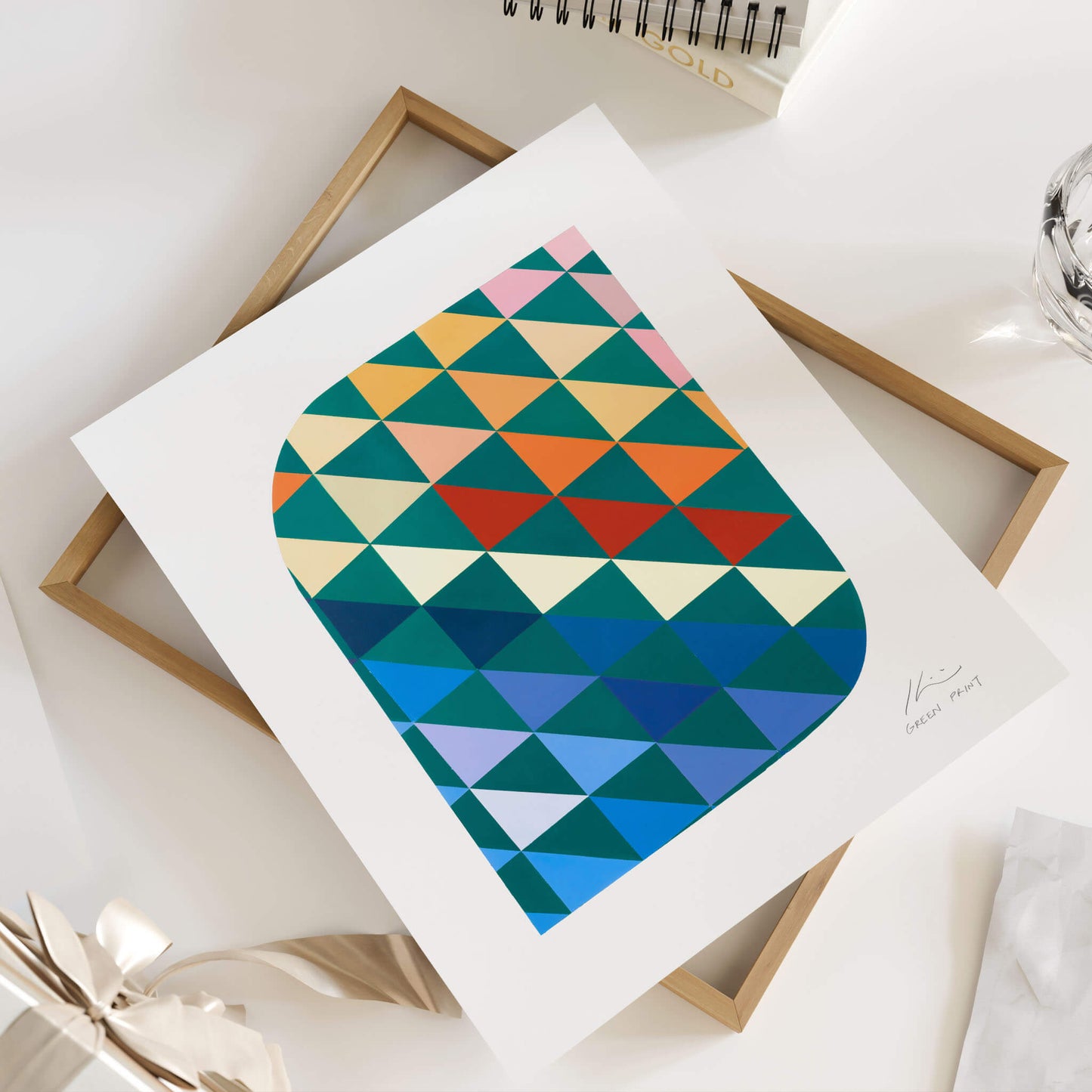Shop limited edition prints running low on stock. Once they're gone, they're gone!
Interview with Colombian Artist Juana Gaviria
Juana Gaviria on Intuition, Order and Metaphorical Marathons
A graduate of the Universidad de los Andes in Bogotá and Rhode Island School of Design in the US, Colombian artist Juana Gaviria has had a varied career covering art, design, architecture and furniture.
She worked as an architect in California before returning to Bogotá in the early 2000s to open a furniture workshop and studio.
Deeply influenced by Bauhaus principles such as ‘Form follows function’ and favouring minimalism over ornamentation, we talk to Juana about what art means to her as an abstract artist seeking order, calm and freedom in Colombia’s chaotic capital city, Bogotá.

Studio Parga: Juana, you’re a multidisciplinary artist with a strong foundation in design and architecture.
What prompted you to move away from a career in architecture and design to work full-time as an artist?
Juana Gaviria: I was interested in design from a very young age and always believed I’d become a designer. In fact, I tried to be one.
But I quickly realised that I needed to be more spontaneous in my work, less formal and less rigid. I had to move away from meticulously planning every creative decision. So now I don’t plan my art when I sit down to paint.
SP: How does a painting come about if it's not planned in advance?
JG: The work takes shape on the page as I draw or paint. It takes shape in the doing, not the thinking. As I work, ideas and forms or themes begin to present themselves. And I take my cue from this. I don’t hold any fixed ideas about what will happen as I progress.
When I begin to organise forms and shapes, say a set of triangles on a page, I might say to myself, ‘This image feels like a guacamaya (a macaw)’. So I begin to focus on the form of a guacamaya and incorporate it into the drawing.
So you might say that I ‘design’ art. I design it and I name it – giving a name to an abstracted image helps to give it form and coherence.
"There will always be blue in my work. Blue is everything to me. Without blue, I don’t know what there would be. Blue is my colour."
SP: Colour exerts a strong influence on your work, alongside the forms and shapes you just mentioned. Is this a conscious decision?
JG: I couldn’t live in a black-and-white world.
I feel like I’m a hummingbird that gravitates towards colour. In everything. And I know which colours are my favourite. When I see them – in the city or walking down the street – I absolutely relish in them. I’ll look at them and say, “See, that red with that purple? They’re perfect together!"
I really feel that this is one of my superpowers as an artist, being able to combine colours.
SP: Do you adhere to a strict colour palette or is your approach to colour also intuitive?
JG: My approach to colour is both intuitive and restricted, if that’s possible. I am instinctively attracted to certain colours and this is visible across my work, my wardrobe, my home, and so on. But at the same time, this attraction has led to me develop a certain palette that I'm comfortable with and work with daily.
There will always be blue and grey in my work, for example, and a pop of yellow-orange. Always.
I find it hard to work with pure colour, with primary colours. Red is the hardest – I find it too much, too strong. Too combative.
But there will always be blue in my work. Blue is everything to me. Without blue, I don’t know what there would be. Blue is my colour.

SP: Do you see your free and intuitive approach to art production changing in the future at all?
JG: Yes, but only if the project warrants it and it happens in a natural way. In a way that benefits the work because the work can only be achieved by a certain, more structured method.
For example, I’ve recently become interested in Native American design, which perhaps sounds very ‘fashionable’, but I’m interested in it as a custom or habit.
From a young age, I would sit on a sofa at home that had a Native American design on it. This sofa has been ingrained in my conscience. And so one day I decided that I wanted to translate its design and patterns into a painting.
Ever since, I have been practising how to draw Native American designs, and this is a process that has helped me to bring more structure into my own work. More form, more design. But of course, only because the project itself warrants it.
SP: Can we expect to see some of these Native American influenced designs in your next exhibition?
JG: Perhaps! Although I’m still not sure where I’m heading with these new experiments, I simply know that at this moment in time, I need to practise them. I need to understand patterns that already exist, to explore them and to organise them. To understand how they’re constructed.
They’re such a deeply ingrained part of American society that I feel I can’t ignore them any longer – I need to get my head around them. Perhaps as well because I am American on my mother’s side and I spend a lot of time in the US, surrounded by Native American designs and influences.
"Art helps me to assimilate my surroundings and create something calmer from them. It helps me to create a visual refuge."
SP: Would you say your work responds to your environment? Sitting here in your studio, it’s clear that you’re attuned to the noises of the city; to Bogotá’s interruptions and pandemonium.
JG: I have ADHD, and I’m all over the place. I find it really hard to be centred. And so my artistic practice is something that helps me to centre myself. It’s a way for me to bring order when I feel like everything is in chaos, and this city is really chaotic.
My mind works in waves. Emotionally, it’s up and down, up and down. Art helps me to stabilise these waves. It helps me to assimilate my surroundings and create something calmer from them. It helps me to create a visual refuge.
Bogotá is a very noisy city. There are many things going on at once. It’s chaotic. It’s dirty. It’s disorganised. For me, my practice helps me to self-regulate. It helps me to organise my emotions and create something ordered.
SP: How do you isolate yourself from the noises of the city when creating work?
JG: I need to disconnect and put my headphones on, or my music on, and think about really simple things. Simple things like planes of colour and how to organise shapes.
This approach to working and the breaking down of forms is influenced by the baggage I carry with me having studied architecture in the US, and design, in a way influenced by the Bauhaus. And the colours and forms of the Bauhaus. The principal idea of which is to create coherent design that’s also aesthetically very well executed.

SP: Returning to freedom and intuition, are your architectural reliefs or wall sculptures created in the same way as your paintings? Freely and without forethought.
JG: No, these pieces do have a more structured process to them. At least in the beginning.
While what I really love to do is to sit and work intuitively, to see what comes out, I do create some works that are planned, my more architectural works. These pieces tend to go to art fairs such as ArtBo and they’re more collectible.
But they’re not necessarily my favourite. I get very excited when I see the outcome, but these large wall sculptures aren’t really part of my day-to-day work as an artist.
SP: Tell us how your wall sculptures take shape.
JG: I send the larger pieces elsewhere to be cut to size and assembled. When they return to the studio there are aesthetic problems that I need to resolve, for example, colour schemes. So I do then return to an intuitive approach.
I don’t always know how an architectural piece will look when it’s finished either – many factors influence the outcome. I might include more vivid colours because I feel particularly happy while making the work. Or I might adopt lighter tones if I’ve recently come back from a holiday where I have been surrounded by spring colours, say.
So yes, my works are very much influenced by the feelings I have at the moment of making the work. And this is true for my wall sculptures as much as my paintings.
SP: What advice would you offer a young artist at the beginning of their career?
JG: My advice to a young artist starting out in their career would be not to think about anyone else. More specifically, don’t think about what anyone else is making. Simply create what comes to you. Be honest with yourself.
And understand that this is a marathon. Riddled with frustrations. You will feel confused and defeated, but you must continue. You must persist.
SP: Is this the hardest thing about being an artist, completing the marathon with all the challenges it throws at you?
JG: It’s an interesting question. Art is very imbalanced. You put a great deal more into it than you get back. It’s a profession that can be light on rewards. Personally, I don’t get any satisfaction from exhibiting my works.
I find exhibiting hard, complicated. Every time you exhibit, you’re opening yourself up to the world and the world will critique you. And that’s difficult.
Something else that’s problematic about being an artist is the sheer quantity of time that you have to be by yourself. Being an artist is a very solitary profession. And you give it your all, all your energy, but you might not earn anything from it on a monthly basis, which can be very frustrating.
So yes, I think pushing through and making yourself be both persistent and consistent is one of the hardest things about being an artist.

SP: What’s the most gratifying thing about being an artist?
JG: When someone decides that they like a work of yours so much that they want it in their home and their life, that’s the best part.
There’s a communication and a mutual understanding that happens, perhaps without words. There’s a natural affinity between you and the collector. And you can’t get this high any other way – it’s absolute magic.
SP: Why is it important to have art in your home?
JG: There are many reasons to have art in the home, but for me, art is a portal to places, people and memories that I hold special to me.
Artworks are vessels of memory – they contain the moment you saw the piece, why it moved you, why and where you bought it. You might buy a piece of art because it’s beautiful or because it reminds you of someone or somewhere special.
It’s important to have art in the home to remind us of these beautiful moments in life; art helps us to tell our own story and understand what’s important to us. It grounds us as individuals and elevates us as a community.
Want to know more about Juana Gaviria and her art? Follow us on Instagram to watch exclusive video interviews with our artists, and be sure to check out Juana's stunning abstract prints below.
Art Prints by Juana Gaviria
Why Studio Parga?
Exclusive art prints that tell stories, build connections and complete your home.
